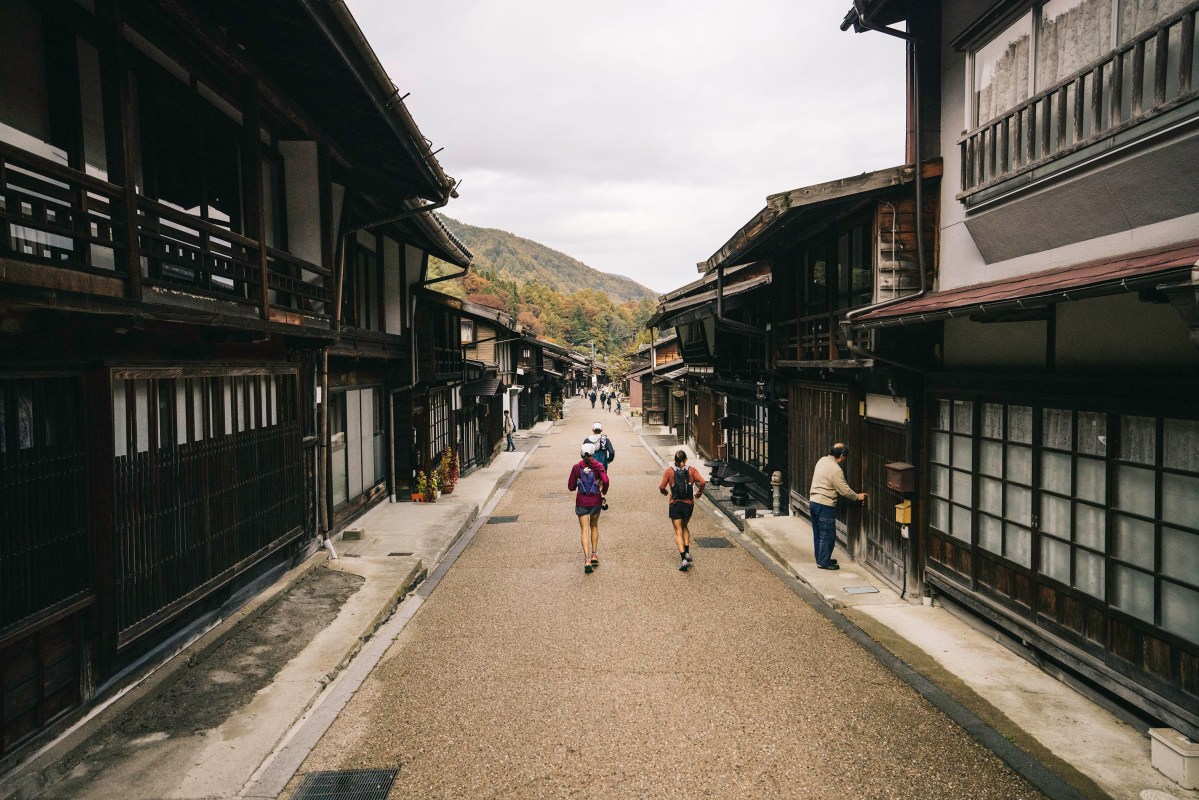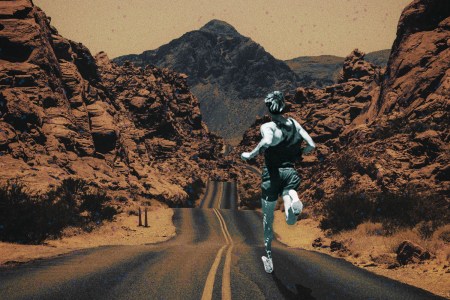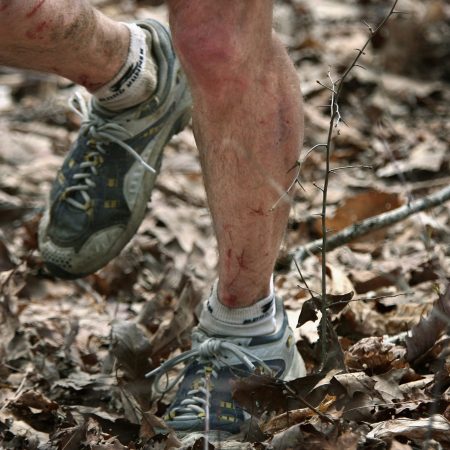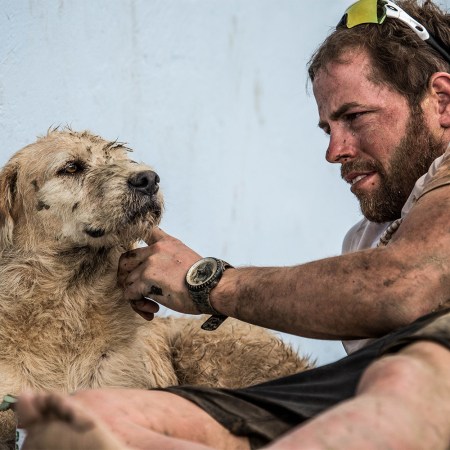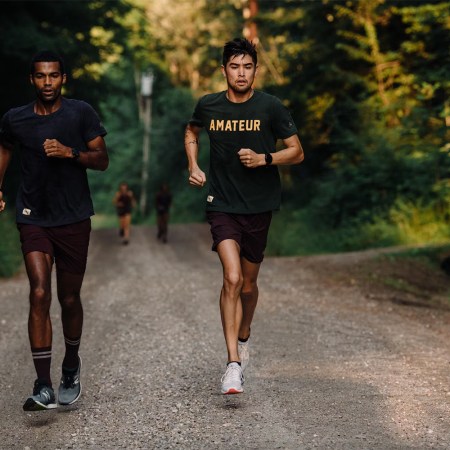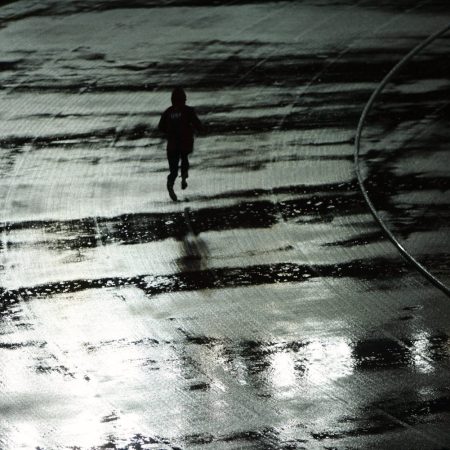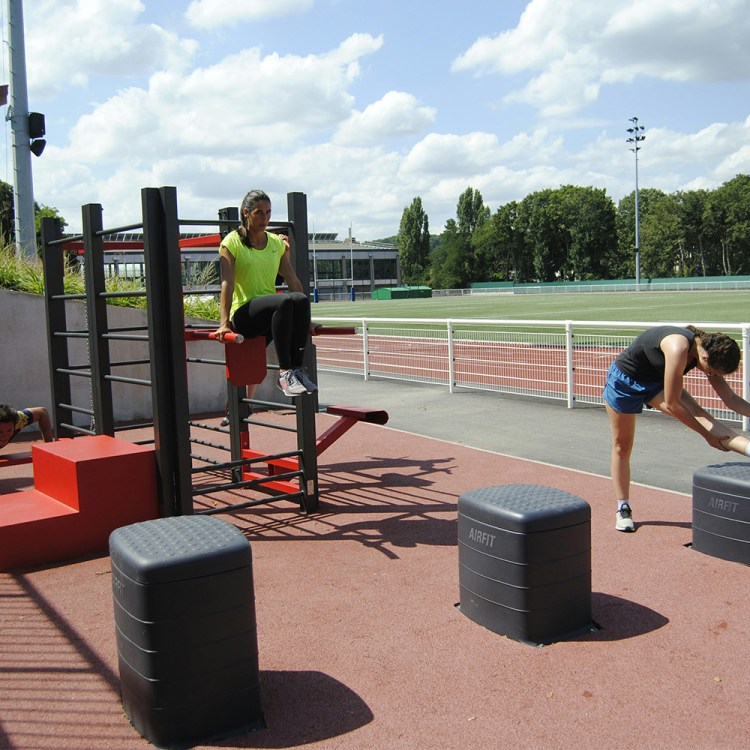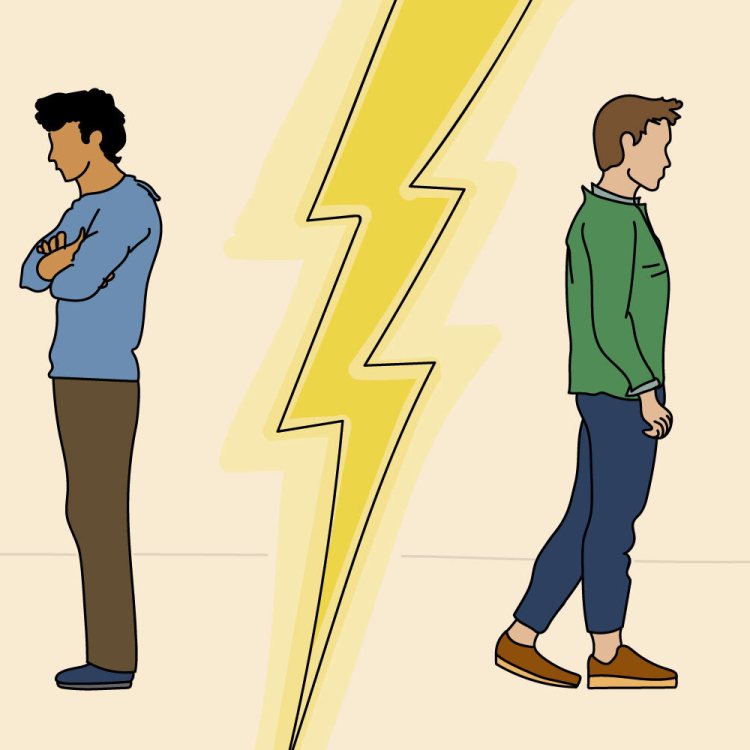Perhaps the most beautiful part of running is the simplicity. One foot in front of the other, again and again, until you reach your goal. Strip away the super shoes, Strava KOMs and race gels, and what you’re left with is the soul of the sport — an experience not defined by what you have, but instead by what you don’t.
But even that doesn’t do it justice. Running isn’t just minimalism and simplicity. At its core, it’s the absence of rules, of calendars and clocks, of conventions and expectations. It’s about creating space for your brain to roam while your feet shuffle forward, fast or slow. It’s a tool to connect with yourself, with others and the world around you in one of the oldest and most intrinsically human ways possible.
Well, that’s my logic at least. After graduating from a chapter defined by competition and results, I now focus on running for growth. To do that, I try to put myself in situations that are new, challenging and outside my comfort zone. Running a hundred-plus miles across the Japanese Alps with two Olympians and two other pro runners isn’t a normal work week — which is exactly why I was so excited about it.
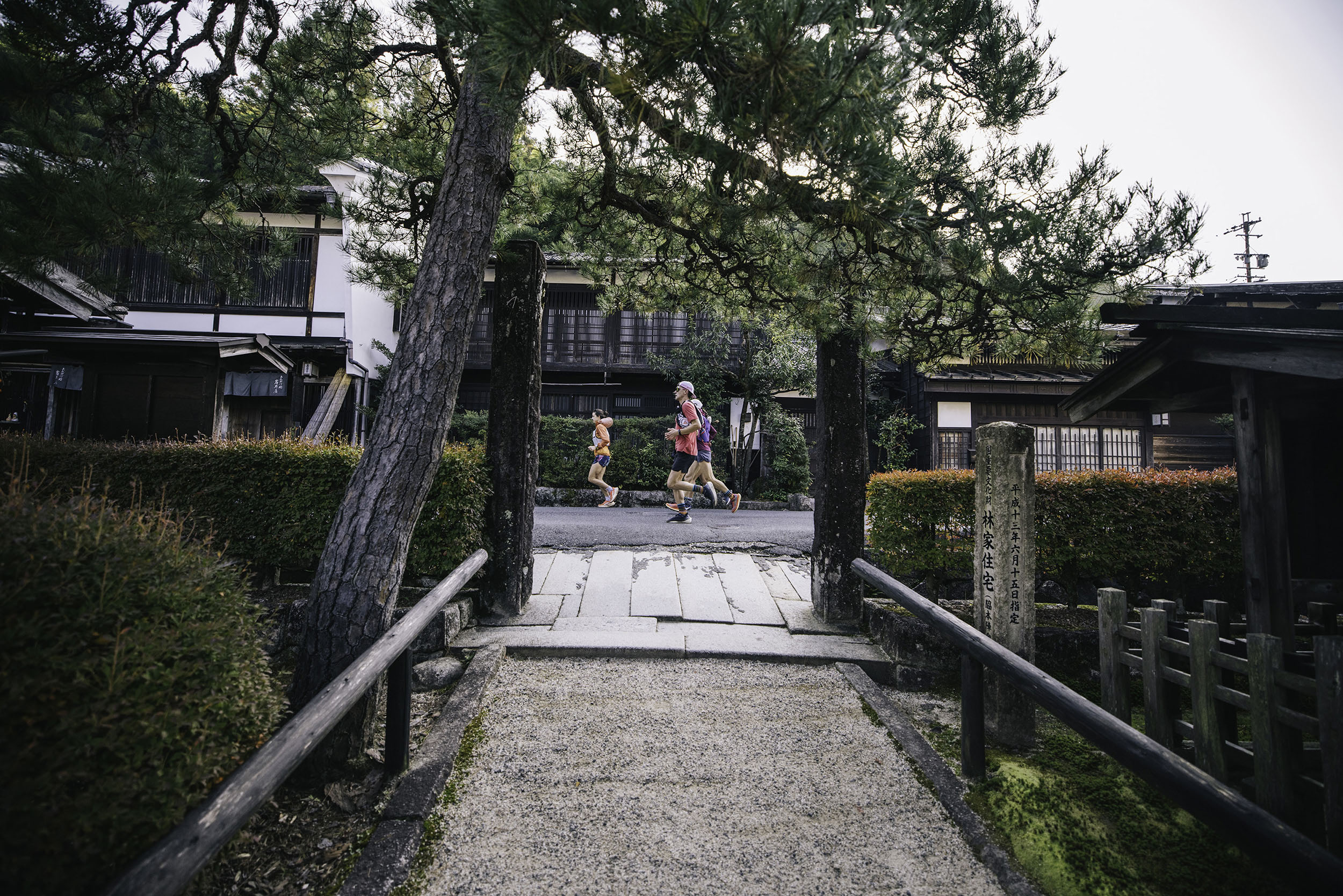
Central Mountain Road
Little known outside of Japan, the Nakasendō was an ancient road built in the early 1600s at the start of the Edo period. Originally created as a postal route, it connected Kyoto and Tokyo (then known as Edo) and was frequently used by merchants, samurai, government officials and pilgrims alike, helping facilitate cultural exchange and foster stability between the prefectures and their fickle feudal lords.
The Nakasendo was one of the Five Edo Routes, or kaido, that connected Japan’s capital with its outer provinces. These roads were centrally administered by the Tokugawa shogunate, who used them as a way to unify the country, which hadn’t been done in the past. As the only route that runs across the Japanese Alps, the Nakasendo translates to “Central Mountain Road.”
The cobbled thoroughfare thrived for more than two centuries, helping drive growth across the country. At its peak, the Nakasendo was 332 miles long, with 69 post towns along it, providing travelers a place to eat and rest before continuing on. With the arrival of trains in the late 1800s, much of the Nakasendo was discarded and covered up by modern infrastructure. However, some stretches of the road and a handful of post towns are well preserved, allowing visitors to effectively travel back in time to ancient Japan.
A Crew With Olympic Pedigree
Not every trip is stacked with awards and accolades like this one, but sometimes accomplishments fall short when describing the people behind them. This is certainly one of those times. Sharing miles with this group reinforced my belief that medals and trophies matter very little, if at all, in determining the true character of a person. However, if you do follow pro running, these names will probably be familiar.
Des Linden is a two-time Olympian and the last American to win a World Marathon Major, claiming the Boston title in 2018. She recently set the 50K World Record and is considering a leap into ultra running. Magda Boulet, a close friend of Des, was on the 2008 U.S. Olympic team and a few years later won Western States, the most prestigious 100-miler in the country. And yet, if you were to meet them in person, you would never guess their running backgrounds because they never talk about themselves.
We were joined by Ruth Croft — who won Western States just last year, has a dozen ultra running wins to her name and is considered one of the best 100-milers in the world right now — and Tim Tollefson, who, among other achievements, has podiumed twice at UTMB, often called the World Series of ultra running. All four of these pros were excited to join a running trip with a lot of unknowns, which speaks to their shared curiosity and willingness to see running as something other than just competition.
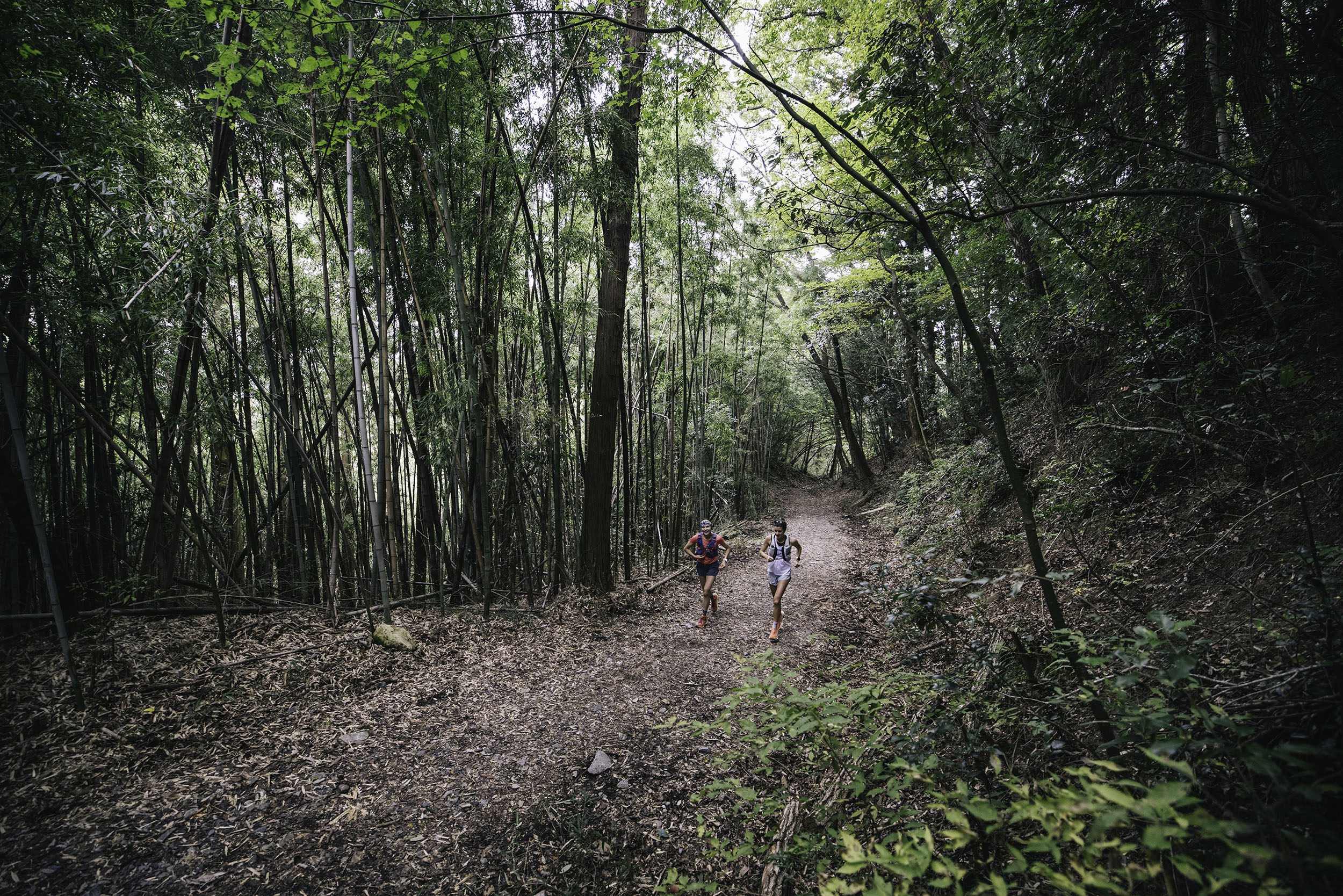
Where It All Began
With a group like this, you might assume our trip to Japan was for a race or big media event, but it was much the opposite. We flew across the Pacific for an actual runcation. No sponsors, no obligations, no tapering or pre-race stress. Our goal was simple: to experience the Nakasendō on foot, much like travelers did centuries ago. And because there were no workouts to run or a mileage to hit, we were able to choose our own pace, stop at tea houses and ramen shops, and soak in the culture on a deeper level.
After learning about the Nakasendō about a year ago from expat friends who live in Tokyo, I haven’t been able to get it out of my head. Unlike the Kumano Kodo, Japan’s famous pilgrimage route and UNESCO World Heritage Site, the Nakasendō is almost lost to history. I love trips that go off the beaten path, especially ones that weave together history and folklore, and this was a perfect nexus of the two.
However, picking a trail like the Nakasendō comes with challenges. To start, there isn’t much information about the trail online, let alone a playbook to build an itinerary with. When I reached out to a handful of boutique tour guides, I was surprised to learn they wanted to charge thousands to build a custom trip, which was well beyond our budget. So, I started piecing together a route from scratch.
Onsen to Onsen
With the goal of maximizing time in the mountains and visiting some of the best preserved post towns, I picked the section between the towns of Nagoya to Matsumoto, which crosses the Japanese Alps. We planned to run 20 or so miles each day, following the original road as closely as possible. But, this wasn’t meant to be a full-on sufferfest, either. We would end each day at an onsen, or traditional hot spring, soaking our legs and eating a traditional dinner, to recover for the next day.
For these point-to-point logistics to be possible, we booked a luggage service that would shuttle our duffels each day so we could carry just the basics when running. Picking the right onsens took more time than expected, primarily because of the large language barrier in rural Japan. Many spoke very little English, which made it hard to know what was available. With help from Google Translate, we eventually were able to get our accommodations figured out, flights and train tickets booked and the route finalized.
What Drives the Runners Who Participate in the Relay Race From Hell?
Dispatches from Speed Project, a mythical, underground 350-mile race through California’s high desertUps and Downs
While the Nakasendō was a wonderful week of running, it was not without a few odd moments. The history of the trail runs deep, the food was amazing and the locals incredibly friendly, but unlike famous roads from European antiquity, the Nakasendō lacks continuity. Some parts are clearly marked and easy to follow, while other sections are much less so. This made a thru-hike like ours feel quite jumbled.
For a mile or two you’re on a scenic singletrack, running through a lush forest. Turn a corner and you’ll arrive at a convenience store parking lot, wondering what the heck happened. Because parts have been paved over by roads and altered by new infrastructure, there isn’t a ton of flow. We got turned around just once, which wasn’t a big deal, but it again underscored the fact that very few people hike it end to end.
The Nakasendo does have a few major highlights you don’t want to miss, namely the three post towns that are “open air museums.” These are so well preserved they look nearly identical to the post towns of yore. The trail also has plenty of stretches where you won’t see another soul for miles, running through the Japanese countryside. To avoid getting lost, make sure to download the route and offline maps beforehand and know how to use them. With these tools, you’ll have a much more pleasant trip.
Checking the Map
For many of the lesser visited sections, you’ll need to check the map frequently to make sure you’re heading the right way because turns are often not marked well, if at all. As Nakasendō becomes more popular in the future, this will likely improve, but for now the signage is very dependent on the section you visit. It is quite clear where the tour guides lead groups and the parts they skip with car shuttles.
This isn’t to say we didn’t get a lot from the thru-hike experience — in some ways, the rawness actually enhanced it. We got to see the full spectrum of original trails to modern roads and took time to explore popular post towns like Tsumago, Magome and Narai, to enjoy local food, hire a guide for history lessons and take a crafts class, too. These experiences were just a few hours of our trip but provided a lot of context about the route, traditions and importance of these small towns.
As a whole, if you accept that some miles will be on side streets or next to highways, the Nakasendō becomes a great experience because of the history that connects all of it. If, however, you’re looking just for the best trail running in Japan, you might want to consider another option because roughly a quarter of the Nakasendō is on actual single-track, while much of the rest is on rural roads.
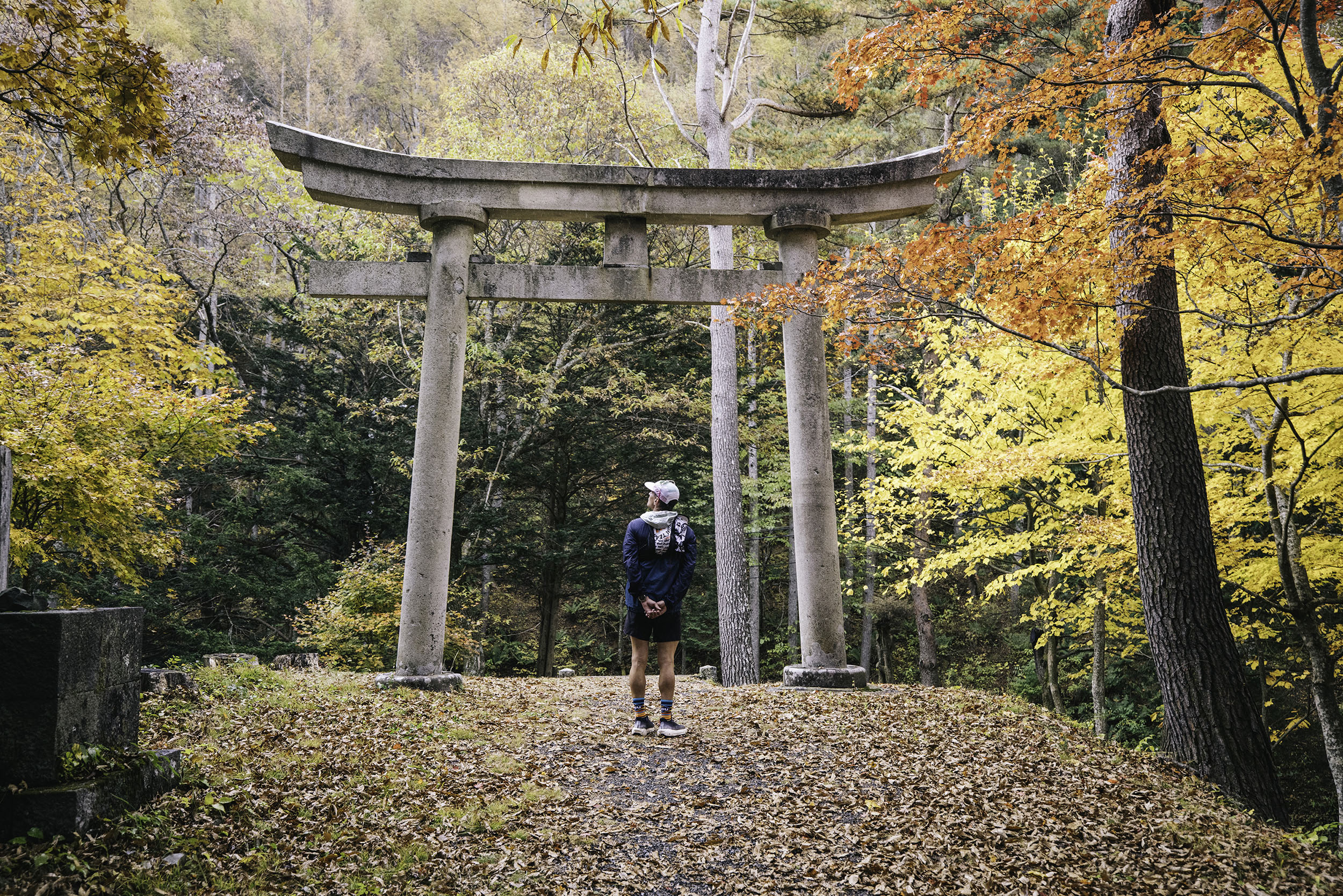
Lacking a Crux
There’s a moment on just about every adventure that acts as a plot twist, an unpredicted turn of events that forces you into the immediate present, often to solve a problem and get the group back on track. These typically lead to lessons —and often laughter in the long run — if you’re able to get through them. Over the years I’ve learned to love these “oh shit” moments because they almost always offer growth.
However, we didn’t have a big crux in Japan. The group meshed seamlessly, there were no injuries or accidents and we didn’t get lost or behind schedule. Other than a few ramen shops closing right before we arrived, it would have been hard to script a smoother trip. The lack of major struggles may sound a bit anticlimactic, and in some ways it was. When I started writing this story, there wasn’t a clear arc to build around, like your typical storybook.
Digging deeper, I realized that our trip on the Nakasendō didn’t need to be defined by a big crescendo to have important lessons. Growth shouldn’t require extreme hardship. It can be as simple as immersing yourself in another place and culture, absorbing interactions with strangers, vulnerable conversations with friends and quiet internal reflections. All of that sums up our trip rather well.
Following Curiosity
Looking back, it was the easily forgettable moments that made it meaningful: kids chasing us down a street, intricate rock stairs on the trail, homemade meals from our hosts. The reason we stumbled into so many moments was a sense of curiosity — taking a chance on an unknown route, sleeping on inn floors, savoring cups of hot tea or making side trips to old temples, just to see what they were like.
On our second to last day, it rained for the first time, forcing us to pull out jackets and hope it would clear before we got into the alpine. An hour later we found ourselves in the village below Torii Pass, the biggest climb of the trip. Opting to wait out the weather and warm up a little, we ducked inside a shop with a sign that read “we serve soba,” a traditional buckwheat noodle. Sitting at a communal table, it hit me.
We had run across the Japanese Alps for no real reason, other than to see what we would find. It was on our terms and our timeline, without expectations on what it would and would not be. We shuffled our feet forward, letting our conversations wander and brains to roam freely. Without that context, I would have never have been in that little shop, eating some of the best noodles of my life. A shared sense of curiosity and a love of running created a space for something totally new, a reminder that you just have to keep putting one foot in front of the other to learn a little more about yourself.
Whether you’re looking to get into shape, or just get out of a funk, The Charge has got you covered. Sign up for our new wellness newsletter today.
